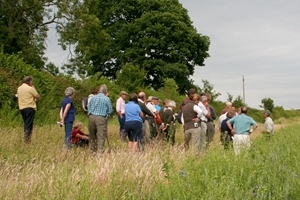Human
 The Latin Homo sapiens means ‘wise man’. Humankind is indeed incredibly intelligent, clever and full of ingenuity. One only has to stop and think of all the amazing achievements that have been accomplished in our history. From early tool making, control of fire and creation of language, through to the invention of vaccinations, flight and the internet, to mention but a few. As for landing a person on the moon – well, that definitely shows how remarkable we are!
The Latin Homo sapiens means ‘wise man’. Humankind is indeed incredibly intelligent, clever and full of ingenuity. One only has to stop and think of all the amazing achievements that have been accomplished in our history. From early tool making, control of fire and creation of language, through to the invention of vaccinations, flight and the internet, to mention but a few. As for landing a person on the moon – well, that definitely shows how remarkable we are!
But are humans always as wise as our Latin name suggests? The definition of wise is ‘showing experience, knowledge, and good judgement’. One story in particular, demonstrates clearly that sometimes humans can be anything but wise.
Polynesians came from Southeast Asia and made long, exploratory voyages in large wooden canoes. In the Fifth Century they came across an island covered in dense vegetation, including extensive woodland. However, due to its remoteness, the island had no mammals, but the numerous seabird colonies made up for this, along with bountiful supplies of fish in the surrounding waters. This remote place seemed, in many ways, a perfect place to settle and became known as Easter Island.
Probably only around 20 or so people landed on the island, accompanied by their chickens and unfortunately rats as well. The climate was not suitable for the growing of crops that the Polynesians were used to, so they were restricted to a diet based mainly on sweet potatoes, chickens and, of course, seabirds and fish.
Life was good for the new inhabitants and they had plenty of time for cultural development. The result was the creation of the most advanced of all the Polynesian societies, and one of the most complex in the world. The Easter Islanders engaged in elaborate rituals and monument construction.
The population of the island grew steadily from the original small group to about 7,000 at its peak in the 1550s. As the population increased, trees had to be cut down to provide space for agriculture, fuel for heating and cooking, and construction material for house-building and for making canoes for fishing. As a result, by 1600, the island was completely deforested.
The deforestation of the island meant not only the end of the elaborate social and ceremonial life; it also had other drastic effects on everyday life for the population generally.
Archaeological research shows that, from 1500, the shortage of trees was forcing many people to abandon building houses from timber and live in caves or stone-built crofts. Canoes could no longer be built and only reed boats, incapable of long voyages, could be made. Fishing was also more difficult because nets had previously been made from the paper mulberry tree (which could also be made into cloth) and that was no longer available. No new trees could grow, because the rats ate the fruits and seeds.
Removal of the tree cover also badly affected the soil of the island. Increased exposure caused soil erosion and the leaching out of essential nutrients. As a result, crop yields declined. The society went into decline and regressed to ever more primitive conditions.
Without trees, and therefore without canoes, the islanders were trapped in their remote home, unable to escape the consequences of their self-inflicted environmental collapse. There were increasing conflicts over diminishing resources resulting in a state of almost permanent warfare. Slavery became common, and as the amount of protein available fell, the population turned to cannibalism.
The Easter Islanders, aware that they were almost completely isolated from the rest of the world, must surely have realised that their very existence depended on the limited resources of a small island. They must have seen what was happening to the forests. Yet they were unable to devise a system that allowed them to find a balance with their environment. Instead, vital resources were steadily consumed until finally none were left.
This story, and the lessons that we could learn from it, should be told as a compulsory part of all educational curriculums.
The fact that so called ‘wise’ people (all of us!) have the ability to live only in the now, with no forethought about their future wellbeing, to the extent that self-destruction becomes the end result, has, perhaps, never been more true than it is today.
Despite all our amazing and incredible achievements, are we blindly recreating another Easter Island, but this time on a worldwide scale?
When all seems to be pointing to an answer of ‘yes’ to this question, hope can come from unexpected places. Go to this link and listen – maybe all is not lost after all.
This is my last species of the month for the GWCT, as I will be retiring at the end of March. However, I will be leaving the task of writing about future amazing species in the hugely capable hands of my GWCT colleague, Jess Brooks.
Peter Thompson
Advisory
Read more from Peter Thompson at his blog.